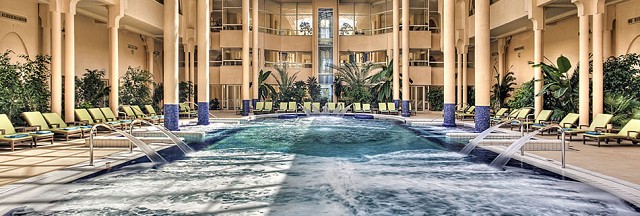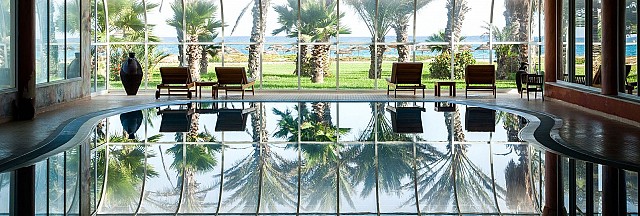Thalassotherapy (Greek 'thalasso': sea, 'therapy': care)
It is defined as the combined use of the benefits of the marine milieu, under medical supervision, for the purpose of prevention or treatment. It must be practiced in a seaside.
Contrary to thermalism, thalassotherapy is essentially reduced to the establishment itself, knowing that in most case it has its own accommodation structure. Conversely, the site fame is a factor of success for thalassotherapy centres.
Thalassotherapy centres also offer non medical care, usually referred to as 'wellness'.
Thalassotherapy establishments practice hydrotherapy by using seawater only.
In a preferred seaside, thalassotherapy is the combined use of the benefits of the marine environment, under medical supervision, for preventive and curative purposes. Such benefits include marine climate, seawater, marine mud, algae, sand and other sea extracts.
Dr. De La Bonnardière, a physician from Arachon, invented the word 'thalassotherapy' in 1867 from two Greek words to mean 'treat by the sea' (Greek: 'thalassa' = sea and 'therapy' = treatment).
Tunisian thalassotherapy is renowned for the quality of its centres, open for the pleasure of curists all year round. The specificity of Tunisian thalassotherapy is that it knew how to combine the requirements of rigour and quality with the tourism stakes of a sunny destination. Its originality lies in using ancestral traditions to renew the practice of thalassotherapy. Between tradition and top-level performance, pleasure and medical treatment, Tunisia found a perfect balance. Thus, it has seduced the knowledgeable customer rather than the novice.
One can assert that, like other any other economic activity, thalassotherapy is an important development factor in tourism, regional development, medicine and alternative medicine. Thanks to the excellent level of Tunisian medical know-how, top-quality service and strict sanitary standards, Tunisian thalassotherapy has achieved a great success.
Since 1994, thalassotherapy as a new orientation for a tourism of excellence has considerably evolved. State support for investors encouraged operators to engage with this new concept, turning thalassotherapy into a structuring product. Combining the most advanced technology and the high performance of competent professionals and ensuring the balance between hotel and medical management in terms of utmost rigour and quality, site beauty and weather mildness, destination safety and reputed hospitality, thalassotherapy has become a full-blown activity and an intrinsic value of Tunisia as a tourist destination.
Key figures
- 58 thalassotherapy centres
- 4 thermal establishments
- About de 30 thermal hammams
- In 2011, the number of curists exceeded 3 million.










